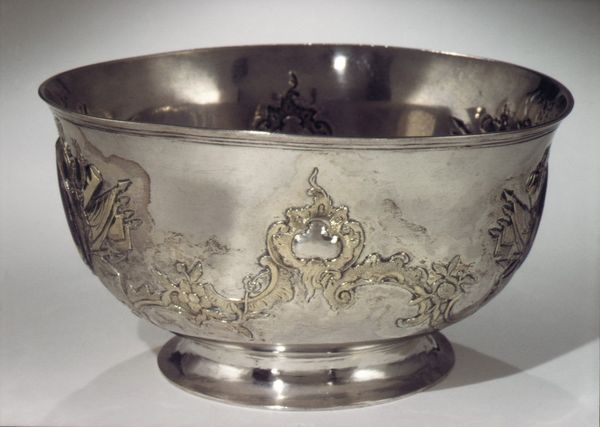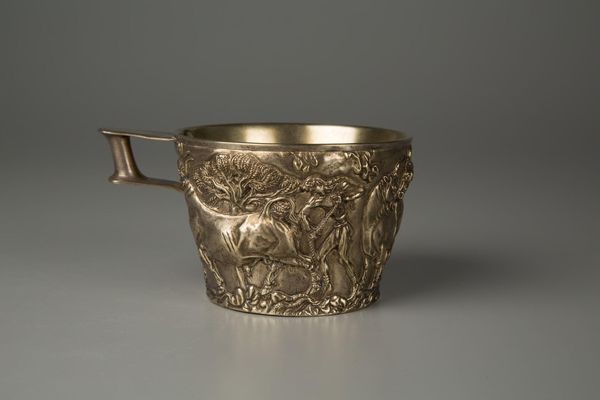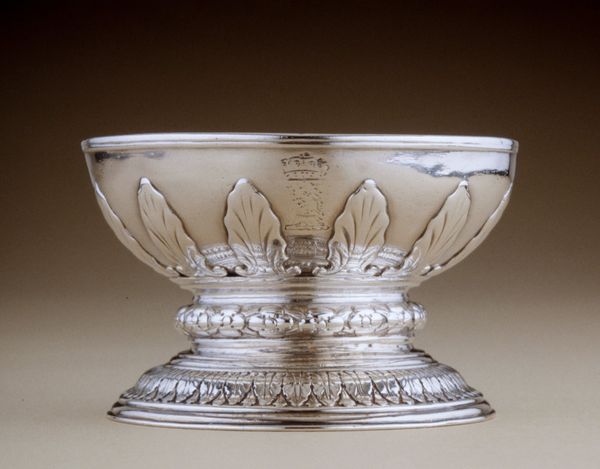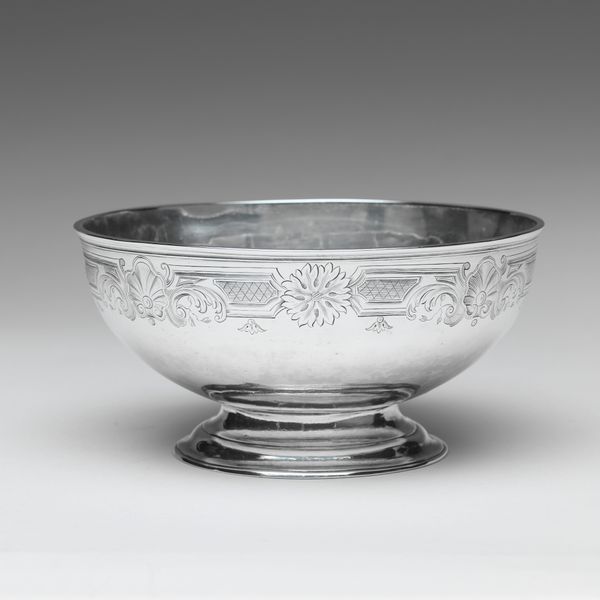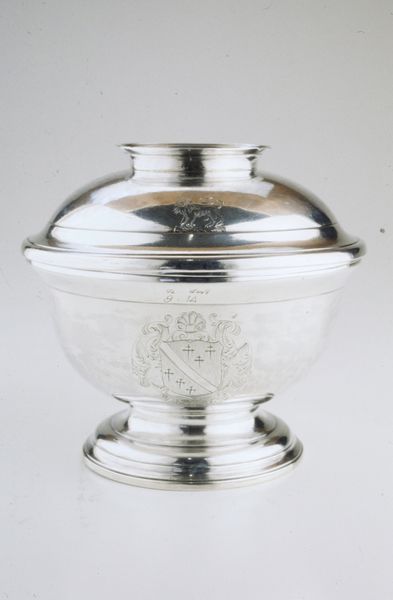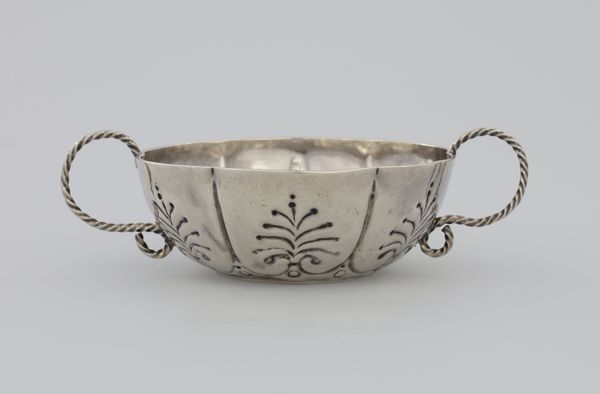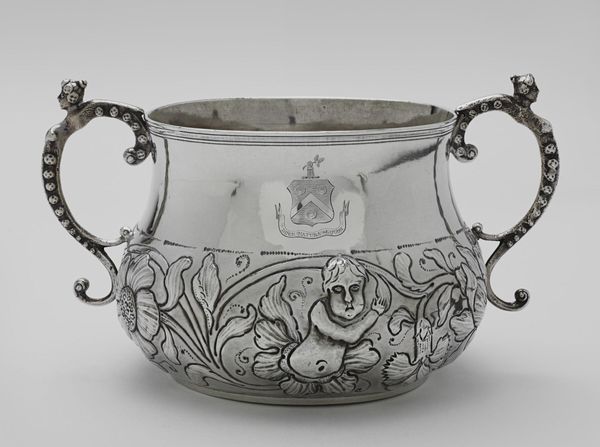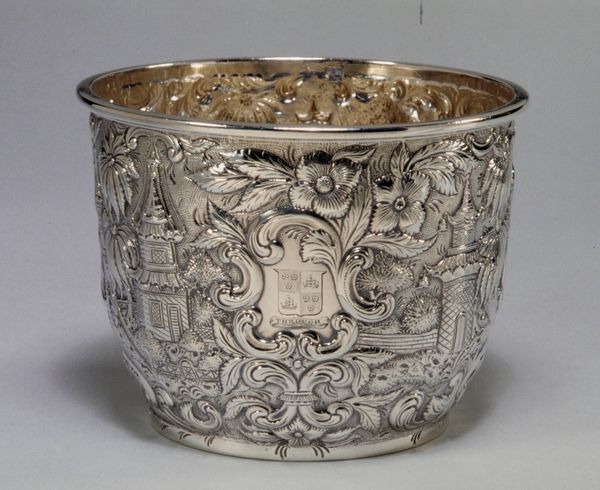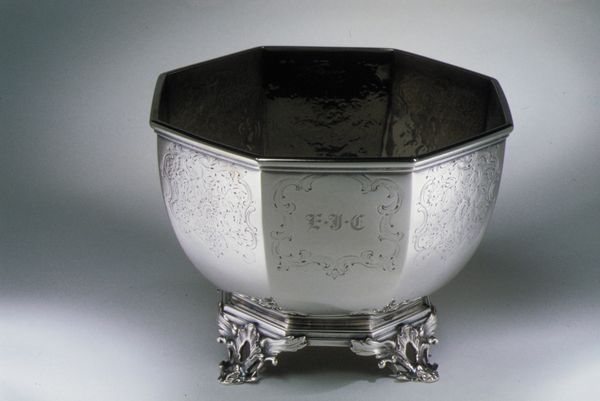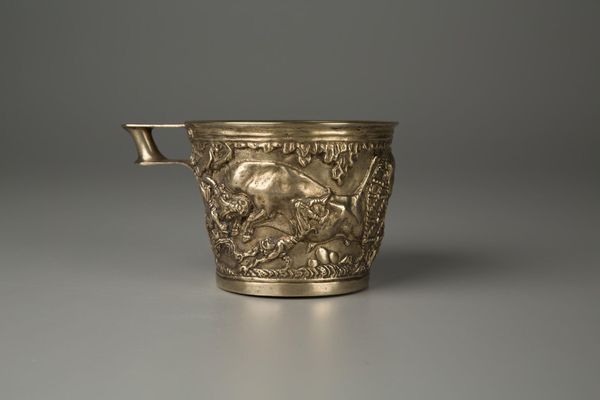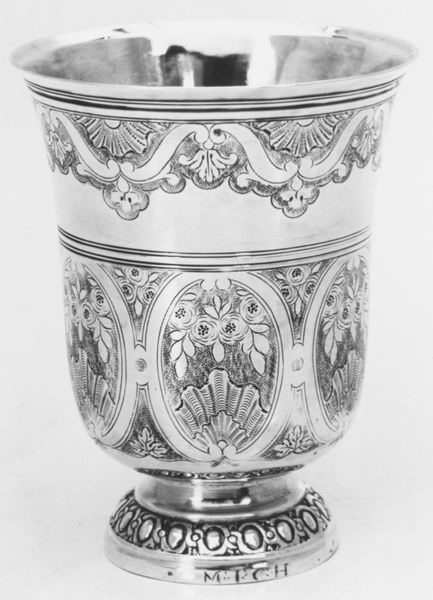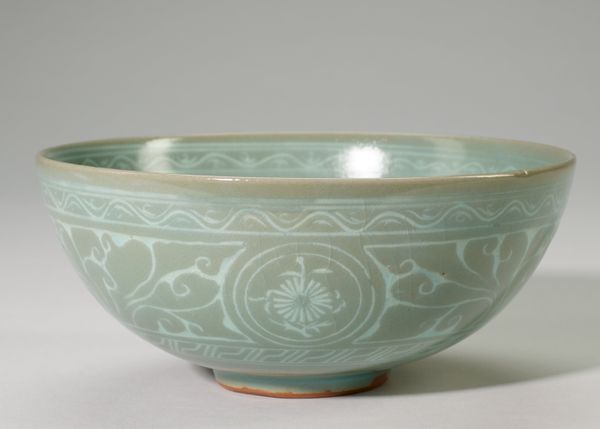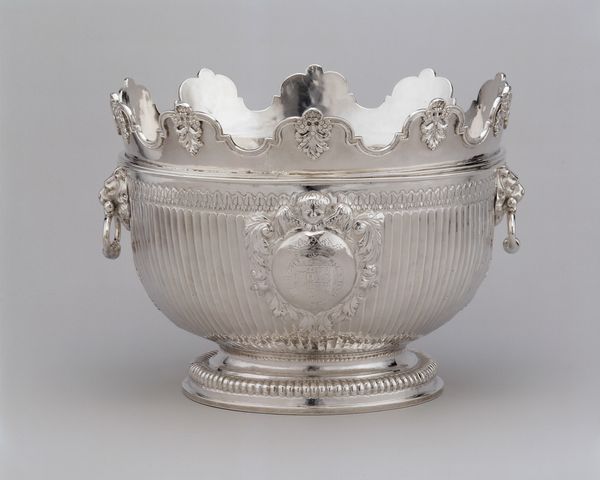
print, ceramic, earthenware
# print
#
ceramic
#
earthenware
#
ceramic
#
genre-painting
#
history-painting
Dimensions: height 5 cm, diameter 7.4 cm
Copyright: Rijks Museum: Open Domain
Editor: This is a small earthenware bowl, "Kopje met afbeelding van Van Speijk," made sometime after 1831 by an anonymous artist. It’s currently housed at the Rijksmuseum. What strikes me is the stark, almost commemorative quality, like a delftware memory. What do you see in it? Curator: The imagery holds so much power, doesn't it? The central explosion at sea, framed by the coats-of-arms...it's not merely decorative. It evokes a specific event, laden with nationalistic fervor and personal sacrifice. Notice how the scene dominates, dwarfing the delicate crown motifs. Does it suggest a specific, heroic ideal taking precedence over traditional authority? Editor: That's an interesting way to put it. It's as if the image becomes more significant than the object itself, or perhaps it transforms a common object into a vehicle for communicating political messages. Curator: Precisely. The symbolism carries enormous cultural weight. Consider Van Speijk's act, a pivotal moment re-told, re-packaged, literally imprinted for daily viewing. It reminds one of relics--mundane objects imbued with powerful associations. Does it also hint at how public figures become icons, their stories molded to serve collective identities? Editor: Definitely. The image acts as a kind of cultural shorthand, instantly recognizable, fostering shared identity. Looking at it now I realize it’s about the conscious construction of cultural memory. Curator: It speaks volumes about the power of symbols and imagery in shaping collective memory, doesn't it? We often underestimate their staying power in common objects. Editor: I had never thought of historical narrative existing this way before. This bowl gave me another point of view on how a message can become an everyday element.
Comments
No comments
Be the first to comment and join the conversation on the ultimate creative platform.
